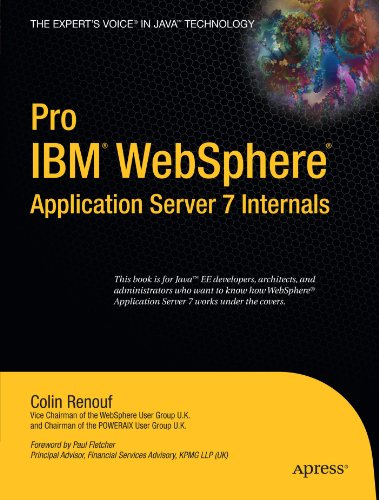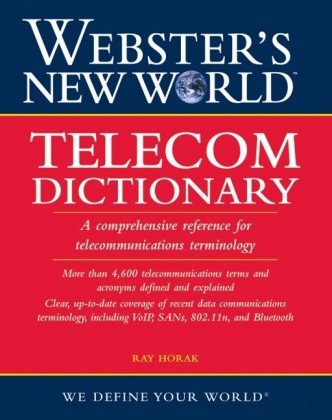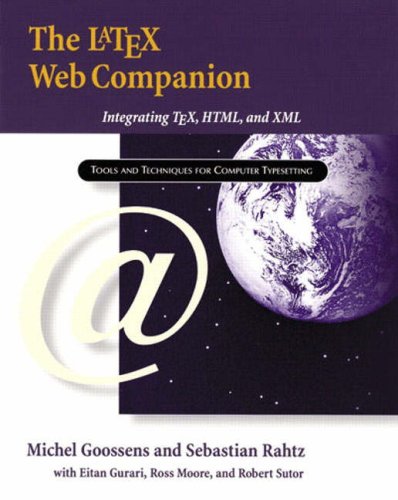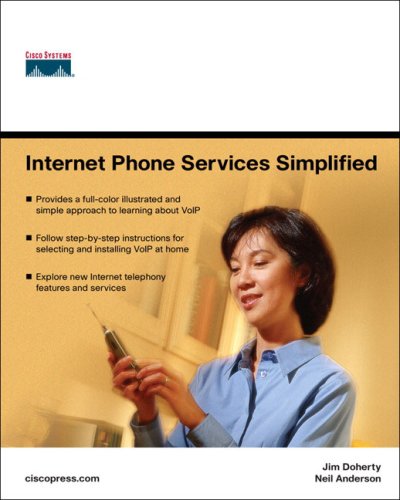Colin Renouf9781430219583, 1430219580
– Administrators will come to understand how the WAS7 environment functions to best optimize it for their environment, and what to do when things go wrong.
– Developers will learn to extend the functionality in the base WAS product.
– Architects will see how the WAS product underpins the IBM offerings to fit in an enterprise.
What you’ll learn
– Explore the internal architecture that makes up a modern high–end application server and how other products extend it to provide additional functionality.
– Implement, deploy, and serve Java EE 5 and other enterprise Java applications.
– See how the environment all fits together so you can make the best use of the WebSphere Application Server services.
– Explore how all this works with simple, important code examples.
– Troubleshoot problems when the inevitable crisis occurs.
Who is this book for?
– Java architects wanting to understand how a modern application server works
– Java developers targeting the JEE and the WAS7 implementation in particular
– WAS7 administrators wanting to understand how to optimize the environment for their application behavior and what underpins the errors in the logs when things do go wrong
– Software architecture students learning how modern system software is architected and implemented
About the Apress Pro Series
The Apress Pro series books are practical, professional tutorials to keep you on and moving up the professional ladder.
You have gotten the job, now you need to hone your skills in these tough competitive times. The Apress Pro series expands your skills and expertise in exactly the areas you need. Master the content of a Pro book, and you will always be able to get the job done in a professional development project. Written by experts in their field, Pro series books from Apress give you the hard–won solutions to problems you will face in your professional programming career.
Table of contents :
Prelims
……Page 1
Contents at a Glance……Page 7
Contents……Page 9
Foreword……Page 15
About the Author……Page 17
About the Technical Reviewer……Page 19
Acknowledgments……Page 21
Introduction……Page 23
WaS architecture Outline from 50,000 Feet……Page 31
Unknown……Page 0
IBM J9 Java Virtual Machine……Page 35
Eclipse/OSGI Runtime……Page 36
WaS enterprise Features……Page 37
Configuration Files……Page 39
Web Container……Page 40
EJB Container……Page 42
Web Services Support……Page 43
the IBM J9 Java Virtual Machine for Java 6……Page 45
Virtual Machine Stack-Based Architecture……Page 48
Heap……Page 49
Java Byte Code, Instructions, and Class Files……Page 50
Garbage Collection……Page 54
Threads and Synchronization……Page 55
Code Generation……Page 56
General Architecture……Page 57
Pluggable Class Libraries……Page 58
Code Optimization……Page 60
Garbage Collection……Page 63
Java Standard Library and Apache Harmony……Page 64
eclipse/OSGi runtime……Page 65
Writing a Simple Eclipse Plug-in……Page 71
Using Extension Points to Create a Browser Application……Page 73
OSGi Bundles……Page 86
OSGi Services……Page 87
running Your Sample OSGi Service……Page 91
OSGi administration……Page 92
Generating Your Own Monitoring Bundle……Page 97
Adding the Monitoring Code to Your WAS7Monitor Bundle……Page 100
Executing Your WAS7Monitor Functionality……Page 111
Viewing the WAS Eclipse Services……Page 112
Viewing the WAS OSGi Services……Page 117
Viewing the Bundles and Extensions……Page 123
Underlying WaS runtime……Page 129
Core WAS Infrastructure Services……Page 131
The WAS Runtime Implementation and Its plugin.xml File……Page 132
WAS Base Server Container Startup and Primordial Components……Page 135
Base Server Container Components Loading via com.ibm.wsspi.extension.server-startup……Page 138
primordial Components……Page 142
Basic Infrastructure Components……Page 143
Server Container Service Components and the application Server Container Initialization……Page 150
Server Container Components……Page 153
Application Server Container Components Loading via com.ibm.wsspi.extension.applicationserver-startup……Page 157
Core application Server Container Components……Page 160
Javaee-Level Service Components and enterprise-Level Quality of Service Components……Page 161
application Server Container Services……Page 166
eJB Container Initialization and application Server Container Services……Page 169
application Server Container Components……Page 170
the eJB Container……Page 183
Generating Your Own EJB Container……Page 189
EJBContainerImpl Methods……Page 195
The JPAComponentImpl Controller and Integration Component……Page 202
The com.ibm.ws.jpa.jar Implementation……Page 203
the Web Container……Page 205
Container and Component Lifecycle Management……Page 207
Web Container Functionality……Page 209
WSWebContainer Lifecycle Methods……Page 212
WSWebContainer WebApp Management and Request Forwarding……Page 213
WSWebContainer Transport Management……Page 214
Web Services……Page 229
the start Method……Page 231
the waradjust Method……Page 232
Metadata Management Methods……Page 233
the ejbMetaDataCreated Method……Page 234
Simple, accessor, and Mutator Methods……Page 236
Loading Web Service references……Page 237
WSChannelManager Creation……Page 238
WSChannelManager Methods……Page 239
target Cluster Member Identification Methods……Page 240
Connection Lookup Methods……Page 241
the MessageContext Class……Page 242
the Serverengine Class……Page 243
the JMSListenerMDB Class……Page 244
the httpSender Class……Page 245
WebServicesServlet Operation……Page 246
JAX-RPC Support Summary……Page 247
Axis2 in a Nutshell……Page 248
The com.ibm.wsfp.main.jar Plugin……Page 251
the WebServicesadminComponentImpl Class……Page 252
the WaSaxis2ComponentImpl Class……Page 253
the MetaDataListener Interface……Page 254
Controlling axis2……Page 262
the processMetaData Method……Page 264
the getServiceref Method……Page 265
the loadConfiguration Method……Page 266
the WaSaxis2ConfigurationBuilder Class……Page 267
The AsyncResponseServlet Class……Page 268
Other Related Components……Page 269
Service Integration Bus……Page 273
Channels……Page 278
Chains……Page 279
Thread Pools……Page 280
JFap handling……Page 281
MQFap handling……Page 282
the Messaging engine relationship……Page 283
The JsMainImpl Class……Page 286
The JsMessagingEngine Interface and the JsMessagingEngineImpl Class Implementation……Page 292
JsBusImpl Class Implementation……Page 294
The MessageStore and MessageStoreImpl Classes……Page 296
high availability……Page 301
Core Groups and High Availability……Page 302
High-Availability Communications……Page 305
Coordination and Synchronization……Page 306
handling Groups……Page 307
the BulletinBoard Interface……Page 310
the BulletinBoardImpl Class……Page 311
Bulletin Board Data related Classes……Page 312
the joinGroup Method……Page 313
DCS, RMM, Channels, and Chains……Page 314
The Transaction Component and the TxServiceImpl Implementation……Page 316
the initialize Method……Page 317
the activateMBeans Method……Page 318
the logDirectories Method……Page 319
The Local Transaction Component and the LTCCallbacksComponentImpl Implementation……Page 320
The RecoveryManager……Page 321
Load Balancing and Scalability……Page 323
Static WebSphere Infrastructure Configuration……Page 324
Runtime Application Clustering……Page 325
JSESSIONID and com.ibm.ws.runtime.jar……Page 331
JSESSIONID and com.ibm.ws.webcontainer.jar……Page 333
JSESSIONID and com.ibm.wsfp.main.jar……Page 334
configuration……Page 337
related products……Page 349
The com.ibm.soacore.sca_6.1.0.jar Plugin……Page 351
The com.ibm.wbicmn.runtime_6.1.0.jar Plugin……Page 352
The com.ibm.bpc.runtime_6.1.0.jar Plugin……Page 354
The com.ibm.wps.runtime_6.1.0.jar Plugin……Page 355
The wp.ext.jar Plugin……Page 356
Mapping of WAS extension points to the extensions That Use Them……Page 359
Index……Page 369







Reviews
There are no reviews yet.